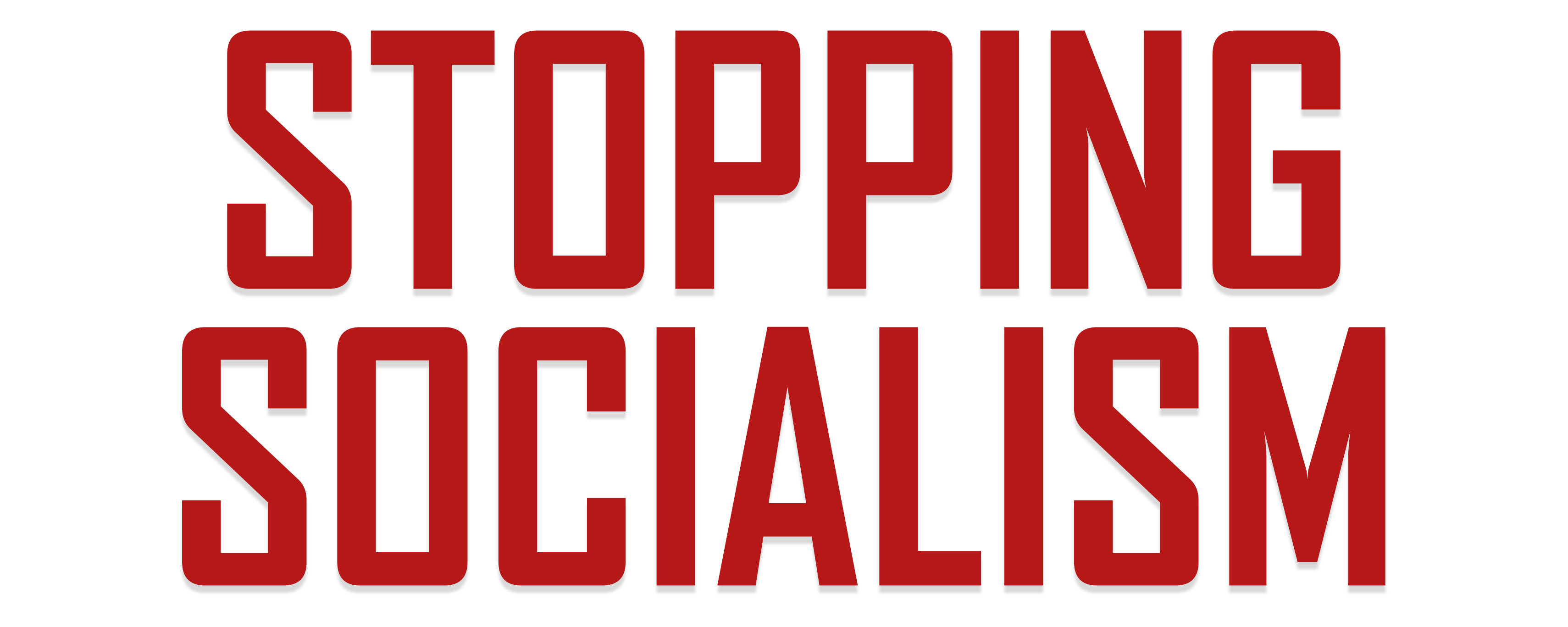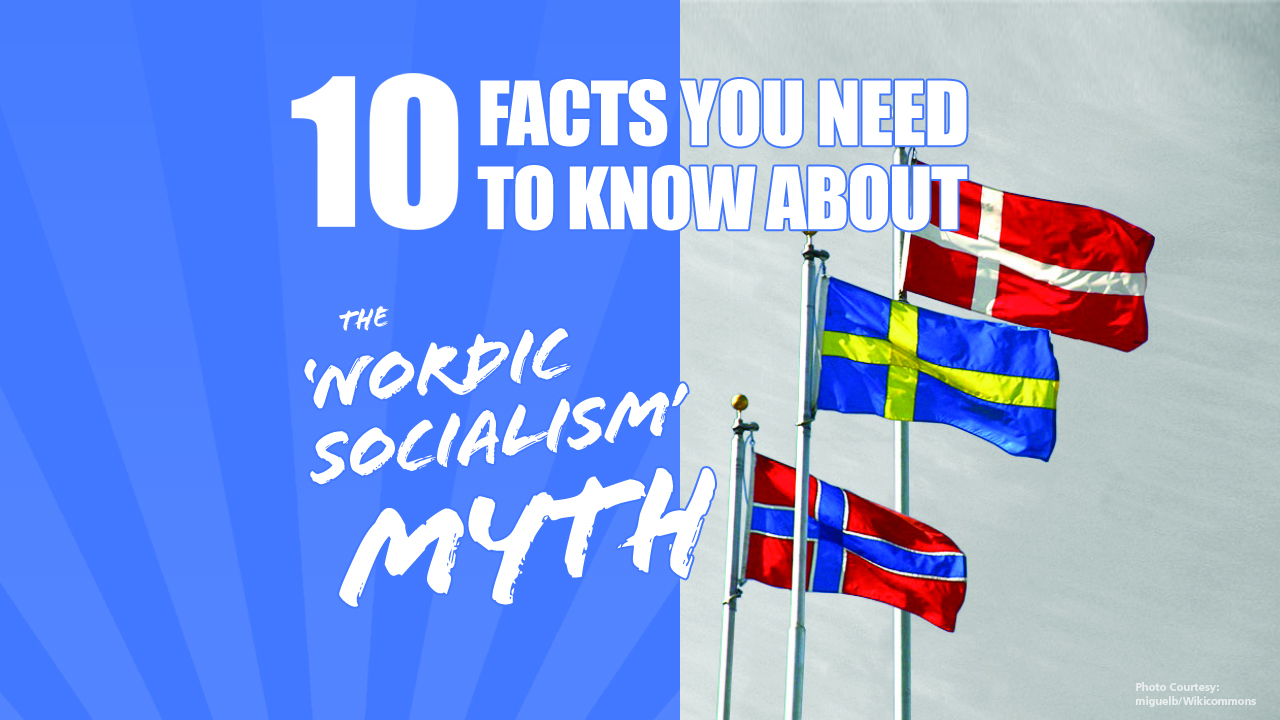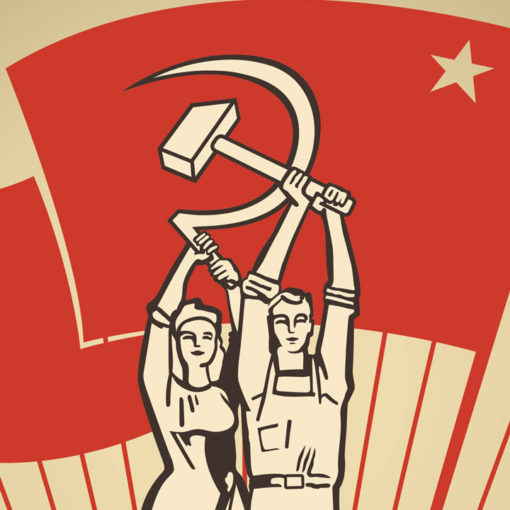The history of Socialism is littered with misery, death, and destruction. Whether you are looking at the Soviet Union, Venezuela, North Korea, Cambodia, Cuba, or numerous other countries who have experimented with collectivist economic theory, the outcome is always the same – economic destruction and humanitarian crises. Yet, despite this undeniable historical carnage, the socialist ideology persists to this day, and in America, it has become more pervasive than ever. How can this be?
When confronted with facts about the failed history of Socialism, advocates tend to fall back on a common refrain – “that wasn’t real socialism.” They will inevitably follow up by saying they support the “Nordic” model of socialism, sometimes called “democratic socialism.”
Bernie Sanders, for example, brings up Nordic countries frequently when defending socialism. “When I talk about democratic socialism, I’m not looking at Venezuela. I’m not looking at Cuba. I’m looking at countries like Denmark and Sweden,” he said.
Socialists and progressives alike paint Sweden and other Nordic countries as borderline utopias and proof that their reimagining of society works well.
There are two huge, overarching problems for Comrade Sanders, however. Nations like Sweden and Denmark are not shining examples of socialism, and they are not utopias either. The success of “Nordic socialism” is nothing more than a big fat myth.
Below are 10 facts that prove it.
1. Denmark, Norway, and Sweden are not socialist nations.
Let’s get the big one out of the way right off the bat. To be an example proving socialism’s success, you need to actually be a socialist country, but it turns out, Denmark, Norway, and Sweden are not socialist nations at all.
The basic definition for socialism, as supplied here by Merriam-Webster, is “any of various economic and political theories advocating collective or governmental ownership and administration of the means of production and distribution of goods.”
Admittedly, the term “socialism” can be, and has been, applied more broadly than this definition implies. However, under a socialist system, you would generally expect more government or collectivist control over property and businesses compared to capitalist nations. This is absolutely not case when you look at Nordic countries.
Objective metrics measuring economic freedom show Nordic and Scandinavian countries largely operate under a free-market system. No, they are not perfectly free, but no country on Earth is, including the United States.
The Heritage Foundation produces an annual report titled the Index of Economic Freedom. This report ranks countries based on several metrics, including “Business Freedom,” “Labor Freedom,” “Property Rights,” and “Trade Freedom.” In Heritage’s 2020 rankings, Denmark came in 8th place among all nations. Sweden came in 22nd. Norway came in a respectable 28th. All three of these countries ended up in the “Mostly Free” category. (For comparison, the United States ranked below Denmark, in 17th place.)
In terms of “Property Rights,” all three of the countries in question ranked above the United States. Same goes for “Business Freedom” and “Government Integrity.” (It’s hard to imagine countries with strong property rights could ever rightfully be considered “socialist.”)
Even many politicians in these nations reject the socialist label. Danish Prime Minister Lars Lokke Rasmussen, responding to people like Bernie Sanders, once said, “Some people in the U.S. associate the Nordic model with some sort of socialism. Therefore, I would like to make one thing clear: Denmark is far from a socialist planned economy. Denmark is a market economy.”
If you don’t want to take my word for it, just listen to Lars. Nordic socialism is clearly a myth. Yes, they do have some socialized industries, including big ones like health care, but many of the other parts of their economy are freer than more than 90 percent of the other countries around the world.
2. Danes, Norwegians, and Swedes are not better off than most Americans.
Despite the fact that Nordic countries are not properly described as socialist, it is true, as I noted previously, that they do have in place more government programs people like Bernie Sanders routinely call for. This includes every socialist’s dream program: universal health care. (Breaking down the facts of a universal health care program requires its own entire article, so I won’t do it here.) Socialists will claim these social programs have served to make people’s lives better. However, when looking at the lives of citizens in Denmark, Norway, and Sweden, this turns out to not be the case.
Due in large part to the large tax onus in their countries, Danes, Norwegians, and Swedes find themselves with less disposable income, paying more for basic goods and services, paying more for housing and transportation, suffering from generally higher unemployment rates. Sound like utopia to you?
3. In Sweden, as well as in Denmark and Norway, all citizens pay high tax rates.
For many socialists, a set of large social programs and a heavily redistributionist tax code is enough to label any country as “socialist.” But Denmark, Norway, and Sweden fail by even that low standard. It turns out, everyone in these countries pay out the nose in taxes, including impoverished citizens.
In these countries, the income tax code is far less progressive than you might think. The threshold at which the top marginal rate applies is only about 1.5 times the countries’ average income. This would never be tolerated in the United States, where you need to make nearly nine times the average income for the top tax rate to kick in. The income tax systems in Scandinavia are often less redistributive than those in America. I know that sounds hard to believe, but it’s true.
4. ‘Nordic Socialist’ countries have low corporate tax rates.
Surely, the Danes, Norwegians, and Swedes make their corporations pay their “fair share,” right? Well, it turns out that claim is a myth too. Corporations in Denmark, Norway, and Sweden have relatively low corporate tax rates—22 percent, 24 percent, and 22 percent, respectively. These rates are only slightly higher than the corporate tax rate of 21 percent in America. However, it is important to note that this 21 percent rate in America is new. Prior to the Trump-era Tax Cuts and Jobs Act, the corporate tax rate in America was a whopping 35 percent, far higher than our Nordic counterparts.
5. ‘Free college’ is not really that ‘free.’
First, it is important to note there is no such thing as “free college.” Someone is picking up the tab. It’s the taxpayer footing the bill, one way or another. But that is beside the point of this discussion. Socialists will point to Nordic countries’ “free” college tuition programs as wonderful collectivist investments in the future, supplying youth with the tools they’ll need to succeed without the burdensome weight of school loans, but this is just another left-wing fairytale.
In Sweden, for example, despite having “free college,” students spend tens of thousands of dollars on costs associated with going to school. Between fees, housing, transportation, and other costs, Swedes often exit college with debt that rivals their American counterparts, largely because the cost of living in these nations is so high. Seventy percent of Swedish students take out school loans. In a country with “free” college, that seems pretty high, doesn’t it?
6. Nordic countries have similar college enrollment rates despite ‘free’ tuition.
In a country that offers tuition-free college, you would expect to see high enrollment rates. In fact, that’s one of the primary justifications used by left-wing Americans who support these programs. In no time, they argue, America would be swarming with intelligent college graduates, primed to revolutionize society.
Turns out, though, this is not the case in Nordic nations. The rate at which people obtain higher education is actually lower in Denmark and Sweden than it is in the United States.
A major reason for this lack of college enrollment is the lackluster perceived return on investment. Based on 2016 numbers, students in America can expect a 65 percent increase in earnings after obtaining post-secondary education. In Denmark, Norway, and Sweden, this earnings boost is much lower. Danes could expect a decent 29 percent boost, but Swedes and Norwegians could only look forward to a 9 percent and 2 percent, respectively, increase in future earnings. Would you trade in four years of your life for a 2 percent boost in potential pay (and tens of thousands of dollars in student loans)?
7. Nordic countries are moving away from their socialist past, not toward it.
It might pain Bernie Sanders to hear this, but his beloved Nordic countries are drifting away from socialism, not toward it.
Sweden is the best illustration of this fact. After benefitting for decades from a free-market system, Sweden took a hard-left turn in the 1970s, embracing many socialistic policies. What followed was a degradation of the economy and living standards.
“Our economy was in crisis. Inflation reached 10 percent, and for a brief period, interest rates soared to 500 percent,” said Swedish economist Johan Norberg. “At that point, the Swedish population just said, ‘Enough, we can’t afford this.’”
In the 1990s, after realizing the socialist experiment was a failure, Sweden began reintroducing free-market reforms, resulting in economic growth not seen since before the country’s trial run of socialism started.
8. Sweden embraces school choice.
Included in the reforms ushered in during the 1990s by Swedish policymakers was a universal school choice program that would make any American conservative proud. Beginning in 1992, children received a school voucher allowing them to attend the school of their choice, whether it be private or public. Of course, the idea of universal school choice is completely antithetical to the worldview of socialists, who believe the government is the only entity that can provide education to our children.
9. Norway benefits (hugely) from fossil fuels.
American socialists would likely be troubled to hear that Norway is a massive exporter of oil. In fact, it’s one of the primary reasons Norway is able to afford many of its social welfare programs. While progressives in America fight tooth and nail to rid the world of fossil fuels, Norway continues to develop areas of the continental shelf for more oil.
In one report, the Norwegian Ministry of Petroleum and Energy stated that “90 fields were in production at year-end 2020, and with large remaining resources, it is expected that the level of activity on the Norwegian shelf will continue to be high for the next 50 years as well.” It does not seem like they are going “green” any time soon. Sorry, AOC!
10. Some ‘Nordic socialist’ countries are moving toward privatizing parts of their health care systems.
When socialists point to Nordic countries as proof of the success of their ideology, they often just mean, “See, their universal health care system works.”
However, a recent trend shows that even this social program is not immune to Scandinavians shift toward free markets. It turns out that an increasing portion of the population in Denmark, Norway, and Sweden are obtaining private insurance as opposed to government-only coverage. Citizens of these countries have said that a general dissatisfaction with their government-run insurance is a primary motivation for the move.
BASE PHOTO: Nordic Flags. Photo by Miguelb. Creative Commons Attribution-Share Alike 2.5 Generic. Design edits made by Donald Kendal.
Donald Kendal is the co-founder of StoppingSocialism.com and serves as the website's creative director and senior editor. He's also the host of "In the Tank," a popular podcast that discusses news and opinion, with a focus on the work of free-market think tanks across the country, and a graphic designer at The Heartland Institute.






